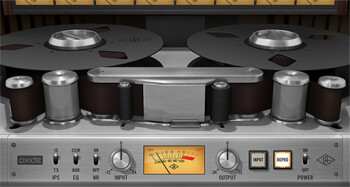As promised, this week we'll see how to make the most of tape machine and console-emulating plug-ins.
A recurrent question on the web is: in which order should I use this type of plug-ins? The answer to this question is not too hard to figure out if you take some time to analyze the situation. What do you want to achieve with these tools? Replicate the signal processing chain that was the standard before the advent of the digital era, right? Well, then you need to do just that. In a mixdown situation we are talking about individual tracks from a multi-track recorder feeding a channel of the console each. They would then be EQed and/or compressed with the internal modules or with outboard gear, eventually sent to aux buses and finally summed in the master bus before being sent towards the stereo tape recorder.
With this in mind, the signal chain ought to be as follows:
- Multi-track recorder emulator as the first insert on every track
- Analog console channel strip emulator in the second spot
- Any other processor you wish to apply (EQ, compressor, etc.)
- Master bus emulation (of the same analog console as above) placed as the first insert of the virtual master bus
- Any eventual processors on the master bus
- And, finally, a stereo tape machine emulator as the last insert on the master bus
Warning! Since you are treading the analog emulation world here, be sure to always heed the maximum levels of operation recommended by the plug-ins you use. Consequently, gain staging is of crucial importance and, thus, should be done before you deal with this “analog” chain. What’s more, you will need to respect the gain structure for each each plug-in if you don’t want to end up with a surplus of coloration/distortion that can make all your previous efforts go down the drain. Don’t forget that the benefits of harmonic distortion are the result of superimposing different layers, not from a plug-in driven to its limits.
In the analog world, the number of tracks available is limited by the inputs and outputs of your gear. Although there are some tricks to get around this, like syncing several multi-tracks or making stereo sub-mixes of certain track groups. Hence, to be faithful to those good ol’ days you are trying to emulate, you should respect the following rules:
- The more vintage the production, the less tracks available and the more coloration the emulations provide
- The closer to the '90s, the more tracks and less coloration
- Beyond 24 tracks you can make sub-mixes of track groups (drums, guitars, etc.). or you could even simulate the syncing of multi-track recorders by combining different types
Okay, now you ought to be ready to really make the most out of what these plug-ins emulating legendary gear have to offer.
Next week I’ll go through a short list of my own personal favorites in this regard.


